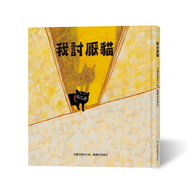Durum wheat is a strategic crop, grown both rainfed and irrigated. This study is based on the evaluation of grain and straw production of five durum wheat varieties grown under rainfed conditions in northern Tunisia. These varieties are Khiar, Karim, Sobirno, Nasr and Razzek. Water uptake was assessed during each phenological stage of durum wheat. These stages are i) germination-rising, ii) tillering, iii) bolting-swelling and iv) heading-flowering and grain filling. This study revealed that Nasr and Sobirano recorded the highest performance in rainwater use to give good yields, achieved during the grain-filling phase. However, at the end of the tillering phase, which marks the end of the vegetative period and the start of the reproductive phase, we found that Karim, Nasr and Sobirano recorded high values compared with other varieties from the same site. These initial results are encouraging, and can serve as a basis for further work to improve wheat production under Mediterranean conditions.
| FindBook |
有 1 項符合
The phenology of durum wheat in relation to its phenology的圖書 |
 |
The phenology of durum wheat in relation to its phenology 作者:Azizi 出版社:Our Knowledge Publishing 出版日期:2024-03-27 語言:英文 規格:平裝 / 64頁 / 22.86 x 15.24 x 0.38 cm / 普通級/ 初版 |
| 圖書館借閱 |
| 國家圖書館 | 全國圖書書目資訊網 | 國立公共資訊圖書館 | 電子書服務平台 | MetaCat 跨館整合查詢 |
| 臺北市立圖書館 | 新北市立圖書館 | 基隆市公共圖書館 | 桃園市立圖書館 | 新竹縣公共圖書館 |
| 苗栗縣立圖書館 | 臺中市立圖書館 | 彰化縣公共圖書館 | 南投縣文化局 | 雲林縣公共圖書館 |
| 嘉義縣圖書館 | 臺南市立圖書館 | 高雄市立圖書館 | 屏東縣公共圖書館 | 宜蘭縣公共圖書館 |
| 花蓮縣文化局 | 臺東縣文化處 |
|
|
圖書介紹 - 資料來源:博客來 評分:
圖書名稱:The phenology of durum wheat in relation to its phenology
Wild Flowers Worth Knowing (Esprios Classics)
Making and Unmaking Botany: Science and Vernacular Knowledge in the Colonial Philippines
Making and Unmaking Botany: Science and Vernacular Knowledge in the Colonial Philippines
Old-Growth Forest Walks: 26 Hikes in Ontario’s Greenbelt
Top Trees: Playing Cards
75 Plants with Superpowers
Letter to a Dandelion: Earth Verse for Gardeners & Nature Lovers
Letter to a Dandelion: Earth Verse for Gardeners & Nature Lovers
In Vitro Production of Plant Secondary Metabolites: Theory and Practice
Plant Galls: Structure and Functions
Making and Unmaking Botany: Science and Vernacular Knowledge in the Colonial Philippines
Making and Unmaking Botany: Science and Vernacular Knowledge in the Colonial Philippines
Old-Growth Forest Walks: 26 Hikes in Ontario’s Greenbelt
Top Trees: Playing Cards
75 Plants with Superpowers
Letter to a Dandelion: Earth Verse for Gardeners & Nature Lovers
Letter to a Dandelion: Earth Verse for Gardeners & Nature Lovers
In Vitro Production of Plant Secondary Metabolites: Theory and Practice
Plant Galls: Structure and Functions
|











